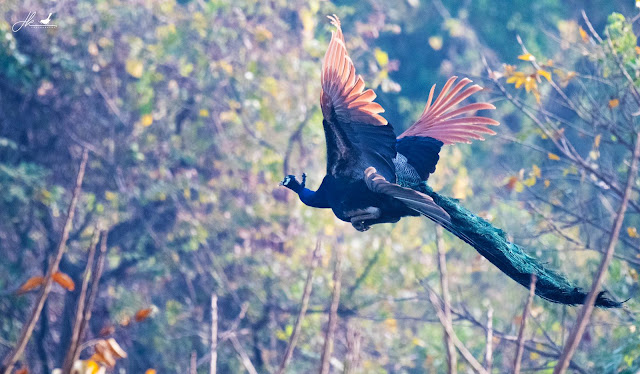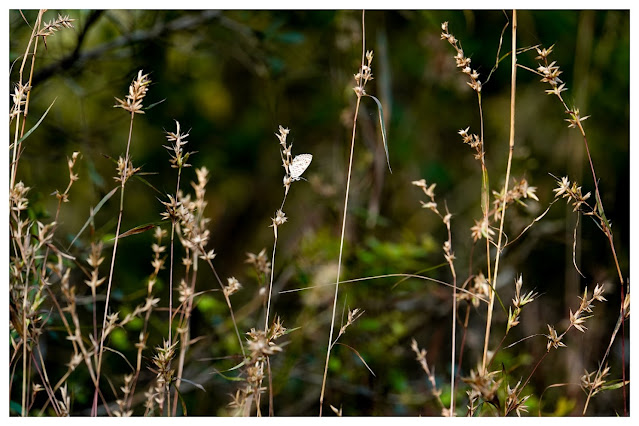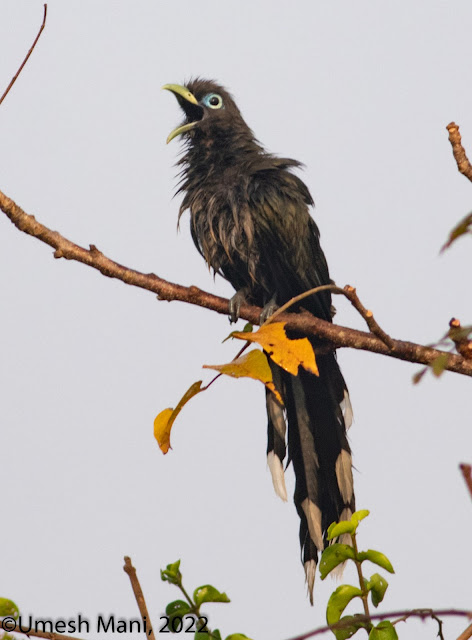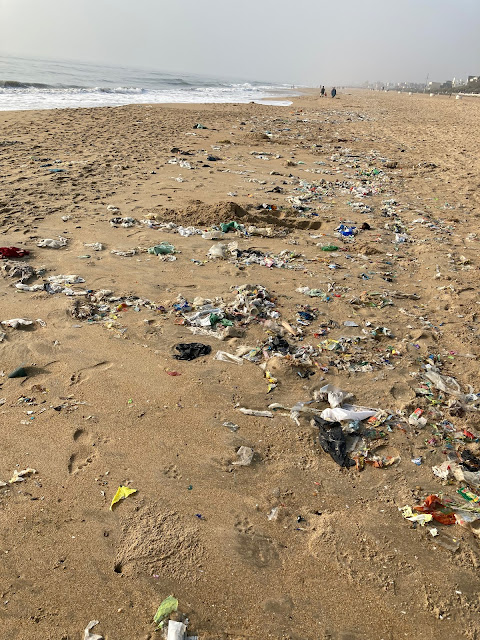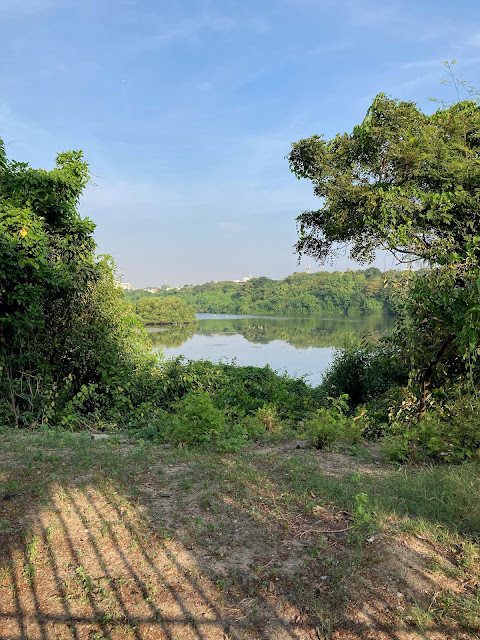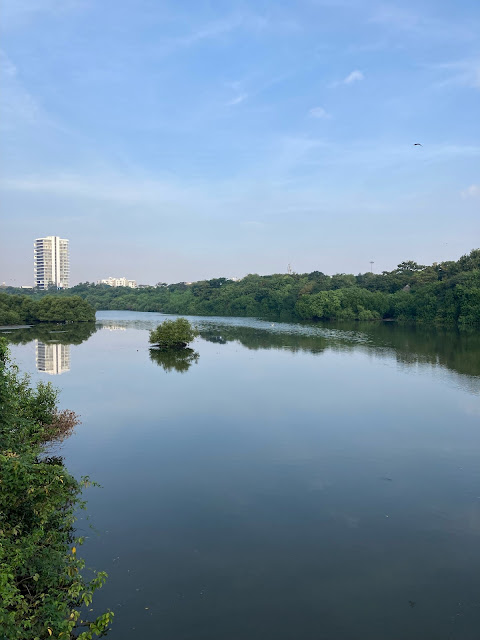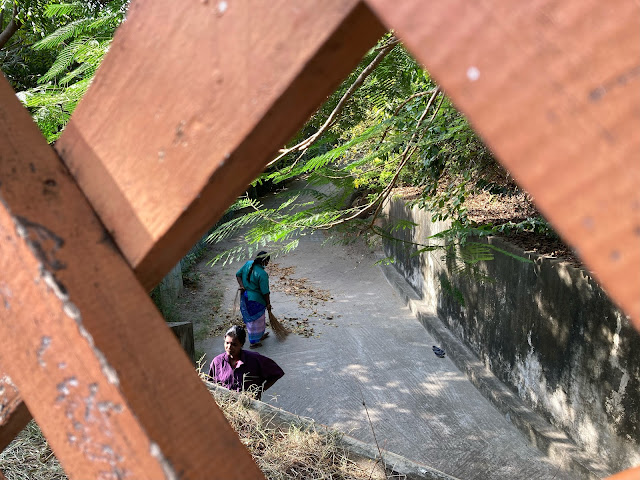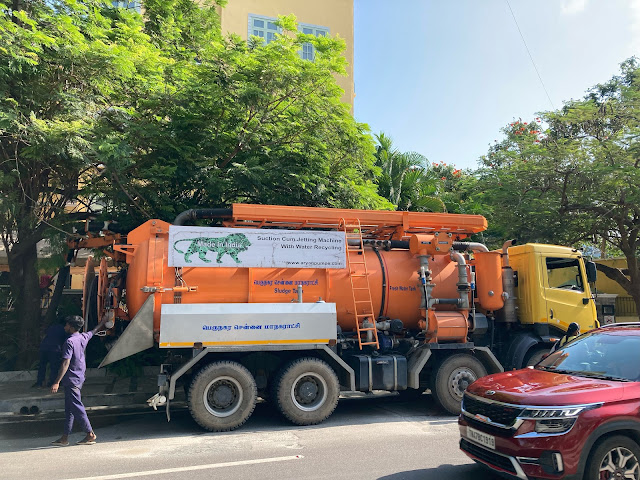5th January 2022
My first birding outing of the year with Umesh and Srinivas. They picked me up before 6 am, and with masks, binoculars and water, we went down OMR to explore(for me first time ) the rear of the Perumbakkam water body, close to where the International Village School is located.
As we wound through the roads of the colony that is well, developing in marshland, there was much muttering and exclaiming from Srinivas and Umesh, as they remarked how even more plots have gone, and walls have come up where there was none before. Habitat loss in front of our eyes.
 |
| We reached the border of the lake at around 615, and dawn was just breaking. |
There was nothing much by way of water bird life here - the water was deep - and so we moved further west, where we could see the edge of the marsh.
 |
We walked through an (as yet) empty plot, with a bunch of these puppies following us. A couple of them took a great fancy to my sandals and pants, tugging at them, in mock play, before losing interest and then chasing each other!
Srinivas then went even further west, on a road with large craters, and mountains for manholes - some motocross GP skills on his part - which was the local facility for the construction workers, who were involved in their morning ablutions and were quite startled by this strange threesome, who had cameras but were not taking selfies.
This part of the marsh had less water and so the waders and jacanas were out in full force. I have never seen so many jacanas at one go! Hundreds upon hundreds.
|
 |
| Open-billed storks also were in plenty, flying overhead in formation |
As we scanned the marsh, Umesh and I argued about the difference between a pylon, post and pillar. If you are wondering why, he grumbled that I was misdirecting him by wrongly misidentifying these important markers, here he was staring at the pillar when I should have been saying post, etc etc. (Not that he missed anything, he was "just saying". )
 |
| A purple heron greatly improved the drab concrete scenery |
The complete
list from this Classic Farms side is here, compiled methodically by Srinivas, down to the last wagtail.
We drove back to the familiar northern side of the lake after this. A road that was familiar to me two years ago, when we used to bring the NIFT students on a nature walk.
 |
| This was a favourite spot, always, with cormorants, kingfishers and pelicans, which would usually delight the students. This time also, the shrub was full of activity. |
There were Northern Pintails everywhere - swimming in the waters, preening on the edge of the lake and sunning and sleeping further up on the banks.
We drove a bit further down and caught a meditating purple heron, and a Pipit walking on the wall/bund.
 |
| Blue-tailed bee-eaters delighted us with their aerial swoops as they caught insects and came back to their perch. |
 |
| Look at the colours! |
Complete list of the
lake northern front here.
We then drove into the ELCOT area, where more surprises awaited me. Last time during the bird race, we had walked in, only to be stopped by the guards, who were not very impressed with our birding activity. However, going in, in a car, is perfectly acceptable it seems. So in we went, and stopped near the water-filled plot, which I hope will not be developed.
 |
| A Little Egret seemed to pose for us, its breeding plumage fluttering in the breeze, its yellow feet clearly seen |
A bunch of Fulvous Whistling Ducks first caught our eye, paddling in the water, behind the egret.
 |
| And as we scanned the banks we saw Wigeons and Shovelers a plenty. |
And just as we were about to leave, a group of Garganeys came swimming to the bank.
I was seeing migratory ducks after a couple of years of Covid-lack-of-birding. I am hoping this year is an improvement on the last! The Elcot list is here.
Many thanks to Umesh and Srinivas for this little outing, and hoping for many more. Some dragonflies later, we headed back. A customary stop for samosas - my offer of digestive biscuits was sneered at - and tea resulted in babblers being added to the list!
An article in The Hindu
Wetland bursting at the seams with jacanas?
The water levels have dropped in the northern and southern extremities of the Perumbakkam wetland, and both the pheasant-tailed and the bronze-winged are making the most of it
Pheasant-tailed and bronze winged jacanas at the Perumbakkam wetland on December 24, 2021. Photos: Prince Frederick
Prince Frederick
When a family member tends towards corpulence, it hardly registers in the mind till their drapes start bursting, the buttons flying with the muzzle velocity of a firearm. Equating resident birds with the close-of-kin, birders are beginning to notice that the Perumbakkam wetland is bursting at the seams with jacanas.
On the southern and northern extremities of the wetland, water has drained hugely and noticeably — respectively — exposing vegetation the pheasant-tailed and bronze-winged jacanas take to, with their never-ending jacanidae toes. They are making the most of it — particularly the pheasant-tailed jacana.
Not many days ago, when birder Gnanaskandan Keshavabharathi scanned the expanse, mumbling numbers, his tally of pheasant-tailed jacanas stood somewhere around 200. He had also counted nearly a dozen bronze-winged jacanas. Counting independently on another day, birder Sundaravel Palanivel’s arrived at a guesstimate: a whopping 400 jacanas with much of that number being racked up by the pheasant-tailed jacanas.
Either way, the jacana presence is monstrously high. Juveniles, particularly of the pheasant-tailed, make up a neat percentage of the gathering. There are also pheasant-tailed togged in their delectable breeding colours and extended sickle.
A stray thought enters the frame, altering the picture. Having guzzled water through November, the Perumbakkam is now somewhat akin to a lung whose fluid build-up is being cleared slowly. The draining is massively incomplete, with the central sections of the wetland still retaining pools of water.
Ornithologist V Santharam notes that this could be a temporary phenomenon resulting from cramped lodgings. Once the water recedes from the other parts, and the wetland gets more accessible to them, the jacanas would be more spread out. When that happens, the sense of mammoth presence would also diminish.
It could well be that the jacanas had been present earlier too in such impressive numbers, but were never shoehorned into small spaces with favourable vegetation.
The ornithologist brings yet another perspective to the jacana-dominated picture. “Congregations of jacanas are not unusual. If they have juveniles now, they must have finished their breeding a little earlier. They probably have different breeding schedules. May be post-breeding, they are congregating at a place that is relatively safe and they have enough food.”
Among the many things that stand out in the tightly-congregations of pheasant-tailed jacanas is cantankerous infighting. Every other second, two jacanas would go up in a flurry of quarrelsome and unruly feathers.
Santharam explains: “They defend small territories within which they can enjoy exclusive feeding rights. I have seen this with rails and coots — they also have a strong territorial instinct. In contrast, waders are migratory; they come here and find the food to be abundant and they go about their business quietly. These resident birds are more specialised in their feeding, looking for things in vegetation, and it is not an easy kind of food to access, and probably, they need to have some space to themselves.”
The original jacana congregation point
V Santharam, ornithologist and director of the Institute of Bird Studies at Rishi Valley, recalls how jacanas ruled the roost at two jheels in North Chennai — back then, North Madras.
“In the 1980s, we used to go to the Manali and Madhavaram jheels (famously known as the twin jheels). we used to access it from the Manali side. I do not remember the bus route — we used to take that bus from Burma Bazaar and it will drop us right at the village, and from there, we would walk about 200 metres and we would reach this place. We used to go through the village and then go into a mango orchard. There would be the shallow waters in front of us, full of lotus leaves — we used to count, most of time, 150 to 200 jacanas. And together, these jheels would be just one-tenth the size of the Perumbakkam wetland.”

